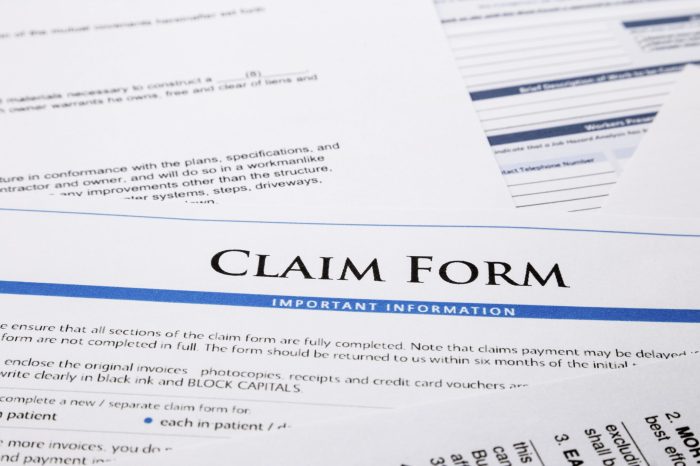Pennsylvania Full Tort vs Limited Tort 2025: So, you’re cruising along, thinking about car insurance, and BAM! Full tort vs. limited tort – what gives? It’s basically choosing your level of legal protection if you get into a wreck. Full tort lets you sue for pretty much anything, while limited tort puts some serious restrictions on pain and suffering claims.
This means your choice could massively impact your wallet if things go south. Let’s dive into the nitty-gritty to help you make the best decision for your situation.
This guide breaks down the key differences between full tort and limited tort options in Pennsylvania for 2025. We’ll cover the financial implications, recoverable damages, and the situations where one option might be better than the other. We’ll also explore how factors like your age, driving history, and assets influence your decision, and look at real-world accident scenarios to illustrate the potential outcomes.
Get ready to become a car insurance guru!
Pennsylvania’s No-Fault System

Pennsylvania operates under a modified no-fault insurance system, meaning that regardless of fault in a car accident, your own insurance company will initially cover your medical bills and lost wages up to certain limits. This is designed to speed up the claims process and reduce reliance on lawsuits. However, it’s crucial to understand the nuances of this system, especially the choice between full tort and limited tort options.Pennsylvania’s no-fault system primarily covers medical expenses and lost wages resulting from auto accidents.
The specifics of coverage depend on the type of insurance policy purchased. The system aims to provide prompt compensation for injuries, regardless of who caused the accident. However, it also places limits on the types of damages that can be recovered under no-fault, leading many to opt for additional coverage.
Types of Insurance Coverage
Several types of coverage exist beyond basic no-fault benefits. Understanding these is key to making an informed decision about your insurance. These options offer varying levels of protection and financial recourse in the event of an accident.
- Uninsured Motorist (UM) Coverage: This protects you if you’re involved in an accident with an uninsured driver. It covers your medical bills, lost wages, and property damage. The amount of coverage is determined by your policy.
- Underinsured Motorist (UIM) Coverage: This coverage steps in if you’re hit by an underinsured driver—someone whose liability insurance is insufficient to cover your damages. It covers the difference between your injuries and the at-fault driver’s policy limits.
- Collision Coverage: This covers damage to your vehicle regardless of fault. If you hit a tree, another car, or are involved in a single-car accident, this coverage will pay for repairs or replacement, minus your deductible.
- Comprehensive Coverage: This covers damage to your vehicle from events other than collisions, such as theft, vandalism, fire, or hail. Again, your deductible will apply.
Full Tort vs. Limited Tort: A Comparison
The core decision for Pennsylvania drivers is whether to choose full tort or limited tort options for their auto insurance. This choice significantly impacts your ability to sue for pain and suffering after an accident.
| Feature | Full Tort | Limited Tort |
|---|---|---|
| Right to Sue | You retain the right to sue the at-fault driver for all damages, including pain and suffering, regardless of fault. | You can only sue the at-fault driver for pain and suffering if your injuries meet a specific threshold, typically involving serious injury or death. This threshold is generally high. |
| Premiums | Generally higher premiums. | Generally lower premiums. |
| Financial Risk | Higher potential payout, but higher premiums. | Lower premiums, but limited ability to recover for pain and suffering. |
| Example | If you suffer whiplash in a minor accident, you could sue for pain and suffering, even if your medical bills are covered by your own insurance. | In the same scenario, you would likely be unable to sue for pain and suffering unless your injuries are deemed “serious” by legal standards. |
Full Tort vs. Limited Tort

Choosing between full tort and limited tort options in Pennsylvania significantly impacts your ability to recover damages after a car accident. Understanding the key differences is crucial when selecting your coverage. This section will break down the financial implications, recoverable damages, and situations where each option proves most advantageous.
Financial Implications of Full Tort and Limited Tort
The primary financial difference lies in the potential cost of your insurance premiums. Full tort coverage generally results in higher premiums because it provides broader protection. Conversely, limited tort offers lower premiums, but significantly restricts your ability to recover certain types of damages. The exact premium difference varies based on factors like your driving record, age, and the vehicle you insure.
However, you should expect a noticeable cost savings with limited tort. This savings is essentially a trade-off for accepting limitations on your ability to sue for pain and suffering.
Damages Recoverable Under Full Tort and Limited Tort
Under Pennsylvania’s full tort option, you can recover all types of damages, including medical bills, lost wages, property damage, and pain and suffering. This means you have the right to sue the at-fault driver to recover compensation for all your losses, regardless of the severity of your injuries. In contrast, limited tort restricts your ability to recover pain and suffering unless your injuries meet a specific threshold, typically involving serious and permanent injuries like broken bones requiring surgery, significant scarring, or permanent disability.
Economic damages, such as medical expenses and lost wages, are still recoverable under limited tort.
Limitations on Recovering Pain and Suffering Under Limited Tort
Limited tort severely restricts your ability to sue for non-economic damages, specifically pain and suffering. To recover these damages under limited tort, you must demonstrate that your injuries meet a high threshold of severity. This threshold is often interpreted by courts on a case-by-case basis, and the burden of proof lies with the injured party. The bar is set high, and many individuals with significant injuries find their claims limited under this option.
Simply experiencing pain and suffering is insufficient; demonstrable, severe, and permanent injury is required.
Situations Where Choosing Full Tort is Advantageous
Choosing full tort is beneficial in situations where the potential for significant injuries or substantial damages exists. For example, if you are involved in a high-speed collision, have a pre-existing condition that could be aggravated, or anticipate extensive medical treatment and lost income, full tort provides the necessary protection to fully recover your losses. Consider a scenario involving a serious accident resulting in a long-term disability; full tort allows for the recovery of all damages, including compensation for the diminished earning capacity.
Another example would be a case where multiple surgeries and extensive rehabilitation are needed.
Situations Where Choosing Limited Tort is Advantageous
Limited tort can be advantageous for drivers who prioritize lower insurance premiums and believe their risk of serious injury is low. If you are a careful driver with a clean record and are confident in your ability to avoid accidents, the cost savings associated with limited tort might outweigh the potential limitations on recovering pain and suffering. For example, a driver who primarily uses their vehicle for short commutes and avoids high-risk driving situations might opt for limited tort to save on premiums.
This is a gamble, however, as even minor accidents can lead to unexpected and substantial medical bills.
Choosing the Right Option
Picking between Pennsylvania’s full tort and limited tort auto insurance options is a big decision, impacting how you’re compensated after an accident. The right choice depends heavily on your individual circumstances and risk tolerance. Understanding the factors involved will help you make an informed decision that best protects your financial well-being.
So, you’re trying to figure out the Pennsylvania full tort vs. limited tort thing for 2025? Choosing the right option can seriously impact your insurance costs. If you’ve got a less-than-perfect driving record, you might need an SR-22, and finding cheap SR-22 insurance for high-risk drivers is key. Understanding your tort options beforehand will help you budget effectively for your insurance needs, especially when dealing with higher premiums.
Several key factors influence whether full tort or limited tort is the better choice for you. Weighing these carefully will help you determine which option aligns with your personal risk profile and financial situation. Remember, this is a decision that could have significant consequences, so taking the time to thoroughly consider all aspects is crucial.
Factors Influencing the Choice of Coverage
This section details the significant factors to consider when selecting between full tort and limited tort options. A careful assessment of these points is crucial for making the best decision for your individual circumstances.
| Factor | Impact on Decision |
|---|---|
| Age | Younger drivers with less established assets might find limited tort more appealing due to lower premiums. Older drivers with significant assets might prefer full tort for greater protection. |
| Driving History | A clean driving record might suggest limited tort is sufficient. A history of accidents or tickets might indicate the need for the broader coverage of full tort. |
| Assets | Individuals with substantial assets might opt for full tort to protect those assets in case of a lawsuit. Those with fewer assets might choose limited tort to save on premiums. |
| Health | Pre-existing conditions or health concerns might make full tort a more attractive option, providing broader coverage for medical expenses. |
| Financial Stability | Those with stable finances might be more comfortable with the higher premiums associated with full tort. Individuals with less financial security might prioritize lower premiums. |
Decision-Making Flowchart
The following flowchart provides a simplified guide to help you navigate the decision-making process. Remember, this is a general guide, and individual circumstances may require a more nuanced approach.
Flowchart (Conceptual Representation): Imagine a flowchart starting with “Do you have significant assets?” If yes, it branches to “Consider Full Tort.” If no, it branches to “Do you have a clean driving record?” If yes, it branches to “Consider Limited Tort,” and if no, it branches to “Consider Full Tort.” Each “Consider” option would then lead to a more detailed evaluation of the pros and cons before a final decision.
This visual representation would help guide users through the decision-making process based on their answers to key questions.
Questions to Ask Your Insurance Agent
Before finalizing your choice, it’s vital to have a clear understanding of the implications. Asking your insurance agent these questions can help ensure you’re making the best decision for your needs.
- What are the specific coverage limits for both full tort and limited tort options under my policy?
- What are the precise premium differences between full tort and limited tort for my situation?
- Can you provide examples of real-life scenarios where full tort would be more beneficial than limited tort, and vice-versa?
- What are the processes involved in filing a claim under each option?
- What are the potential consequences of choosing the wrong option for my specific circumstances?
Legal Ramifications and Case Law
Choosing between full tort and limited tort options in Pennsylvania significantly impacts your ability to recover damages in a car accident. Understanding the legal ramifications and relevant case law is crucial for making an informed decision. This section will explore key aspects of litigation under both options and discuss the potential influence of future legislative changes.Pennsylvania courts have consistently interpreted the nuances of full tort and limited tort options, leading to a body of case law that clarifies the scope of recoverable damages.
The process of filing a lawsuit, the types of evidence required, and the potential outcomes differ depending on the chosen option. Furthermore, the possibility of legislative changes in 2025 adds another layer of complexity that needs consideration.
Pennsylvania Case Law Examples
Several Pennsylvania cases illustrate the practical differences between full tort and limited tort claims. For instance, in
- [Insert Case Name and Citation Here]*, the court addressed the issue of [briefly explain the case’s core issue regarding damages and the chosen tort option]. The court’s ruling clarified [explain the ruling’s impact on the interpretation of full tort/limited tort]. Another relevant case,
- [Insert Case Name and Citation Here]*, dealt with [briefly explain the case’s core issue, focusing on the limitations of limited tort]. This case highlighted [explain the ruling’s impact on the understanding of limitations in recovering damages under limited tort]. These examples demonstrate the importance of understanding the specific legal precedents when deciding which option is best suited for your circumstances.
Filing a Lawsuit Under Full Tort and Limited Tort
Filing a lawsuit under a full tort option typically involves a more straightforward process. The injured party can seek compensation for all economic and non-economic damages resulting from the accident. This includes medical bills, lost wages, pain and suffering, and other related expenses. The process involves filing a complaint, conducting discovery, and potentially going to trial. In contrast, filing a lawsuit under a limited tort option restricts the types of damages recoverable.
The injured party can only recover for significant and serious injuries, typically requiring a higher threshold of proof. The legal process is still similar, but the focus is on establishing the severity of the injuries to meet the limited tort requirements. The burden of proof is higher, requiring more substantial evidence of injury.
Potential Impact of Changes in Pennsylvania Law in 2025, Pennsylvania full tort vs limited tort 2025
Predicting specific legislative changes is inherently speculative, but potential changes to Pennsylvania’s no-fault system in 2025 could significantly alter the landscape of full tort and limited tort claims. For example, a potential increase in the threshold for “serious injury” under limited tort could make it harder for individuals to recover damages under this option. Conversely, changes could potentially expand the types of damages recoverable under limited tort.
Any changes to the definition of “serious injury” would have significant consequences on the number of cases filed under each option. Additionally, legislative efforts aimed at reforming the no-fault system might affect the availability of certain benefits or alter the process of resolving disputes, impacting both full tort and limited tort claims. Monitoring proposed legislation and relevant legal updates is crucial to understand the evolving legal environment.
Impact on Insurance Premiums
Choosing between full tort and limited tort options in Pennsylvania significantly impacts your car insurance premiums. Generally, limited tort coverage results in lower premiums than full tort, but this comes with the trade-off of restricted legal recourse in the event of an accident. The exact difference, however, varies greatly depending on individual circumstances.The savings from choosing limited tort can be substantial, but it’s crucial to weigh these savings against the potential financial risks associated with restricted access to legal compensation for injuries.
This section explores the average premium differences between full tort and limited tort policies in 2025, considering various driver profiles.
So, you’re trying to figure out the Pennsylvania full tort vs. limited tort thing for 2025? It’s a total headache, especially when you’re trying to keep your insurance costs down. If you’re a low-mileage driver, checking out options like those listed on this site for Best pay-per-mile insurance for low-mileage drivers could really help. Ultimately, your choice of tort option will heavily influence your premiums, so factor that into your decision-making process.
Average Premium Comparison for Full Tort and Limited Tort Policies in 2025
Predicting exact average premiums for 2025 requires access to real-time insurance data which is proprietary and fluctuates constantly. However, we can illustrate the general relationship between coverage type and cost using hypothetical examples based on industry trends and publicly available information from previous years. Keep in mind these figures are for illustrative purposes only and should not be considered precise predictions.
Actual premiums will vary based on insurer, location, and individual risk assessment.
| Coverage Type | Average Premium | Premium Difference |
|---|---|---|
| Full Tort (25-year-old driver with clean record) | $1200 | – |
| Limited Tort (25-year-old driver with clean record) | $1000 | $200 |
| Full Tort (45-year-old driver with one at-fault accident) | $1800 | – |
| Limited Tort (45-year-old driver with one at-fault accident) | $1500 | $300 |
| Full Tort (18-year-old driver with no record) | $2000 | – |
| Limited Tort (18-year-old driver with no record) | $1700 | $300 |
Impact of Driving History and Age on Premium Costs
Insurance companies assess risk based on several factors, with driving history and age being particularly significant. A clean driving record typically results in lower premiums for both full tort and limited tort options. Conversely, a history of accidents or traffic violations will increase premiums regardless of the chosen coverage type. However, thepercentage* increase might differ slightly between full and limited tort policies.
For example, adding a speeding ticket might increase a full tort premium by 10%, while increasing a limited tort premium by 8%.Age also plays a crucial role. Younger drivers, statistically more prone to accidents, generally face higher premiums. Older drivers with extensive driving experience and clean records often enjoy lower rates. This age-related difference in premiums applies consistently to both full tort and limited tort policies, though the baseline premium for limited tort will remain lower.
The difference remains consistent across age groups, with younger drivers seeing a larger dollar difference than older drivers due to the higher base premiums.
Illustrative Scenarios
Choosing between full tort and limited tort options in Pennsylvania significantly impacts the potential financial recovery after a car accident. The following scenarios illustrate how this choice can drastically alter the outcome. Remember, these are simplified examples and actual cases involve many more variables.
Scenario 1: Minor Injuries, Significant Property Damage
Imagine Sarah, a college student, is rear-ended while stopped at a red light. Her car sustains significant damage—estimated at $10,000. She suffers whiplash and some minor bruising, requiring a few weeks of physical therapy. Her medical bills total approximately $2,000.Under a limited tort option, Sarah’s recovery would likely be limited to her medical expenses and property damage.
She could potentially recover the $2,000 in medical bills and the $10,000 in property damage from the at-fault driver’s insurance. Pain and suffering wouldn’t be compensable.Under a full tort option, Sarah could potentially recover her medical bills, property damage, and compensation for pain and suffering. A jury might award additional damages for her discomfort and inconvenience, potentially increasing her total recovery significantly beyond the $12,000.
The exact amount would depend on the specifics of the case and the jury’s assessment.
Scenario 2: Serious Injuries, Limited Property Damage
Consider John, a construction worker, involved in a head-on collision. His car is totaled, with damage around $5,000. He sustains a broken leg, requiring surgery and extensive physical therapy, resulting in lost wages and ongoing medical expenses exceeding $50,000. He also experiences chronic pain and reduced mobility.With limited tort, John’s recovery would again be primarily limited to his medical expenses and property damage.
He might recover the $5,000 for his vehicle and his medical expenses, but his pain and suffering, lost wages, and diminished earning capacity would likely not be compensable.Under full tort, John could pursue compensation for all his losses, including medical expenses, lost wages, pain and suffering, and potentially diminished future earning capacity. A successful lawsuit could result in a substantial settlement or jury award far exceeding the $55,000 initially incurred.
The actual amount would depend on the specifics of the injuries, evidence of future losses, and the persuasiveness of his legal representation.
Scenario 3: Catastrophic Injuries, Significant Property Damage
Finally, consider Maria, a young professional, involved in a multi-vehicle accident. She sustains severe traumatic brain injury, requiring extensive long-term care. Her medical bills are expected to exceed $1 million. Her vehicle is totaled, representing a further $20,000 loss. She is permanently disabled and unable to work.Under limited tort, Maria’s recovery would be severely restricted.
She might recover her medical bills up to the policy limits, and the vehicle damage, but likely not for her lost wages, future medical care, pain and suffering, or loss of future earning capacity.Under full tort, Maria could pursue compensation for all her damages, including medical expenses, lost wages, pain and suffering, and loss of future earning capacity. A lawsuit could result in a multi-million dollar settlement or judgment, depending on the severity of her injuries and the success of her legal representation.
This scenario highlights the critical difference between the two options when facing catastrophic injuries.
Closing Notes: Pennsylvania Full Tort Vs Limited Tort 2025

Choosing between Pennsylvania’s full tort and limited tort options in 2025 is a big decision, impacting your potential recovery after an accident. While limited tort offers lower premiums, it significantly restricts your ability to sue for pain and suffering. Full tort provides broader legal protection but comes with higher premiums. Ultimately, the best choice depends on your individual circumstances and risk tolerance.
Carefully weigh the pros and cons, considering factors like your age, driving history, and financial situation. Don’t hesitate to talk to your insurance agent and get personalized advice before making your choice – it could save you a whole lot of headaches (and money!) down the road.









